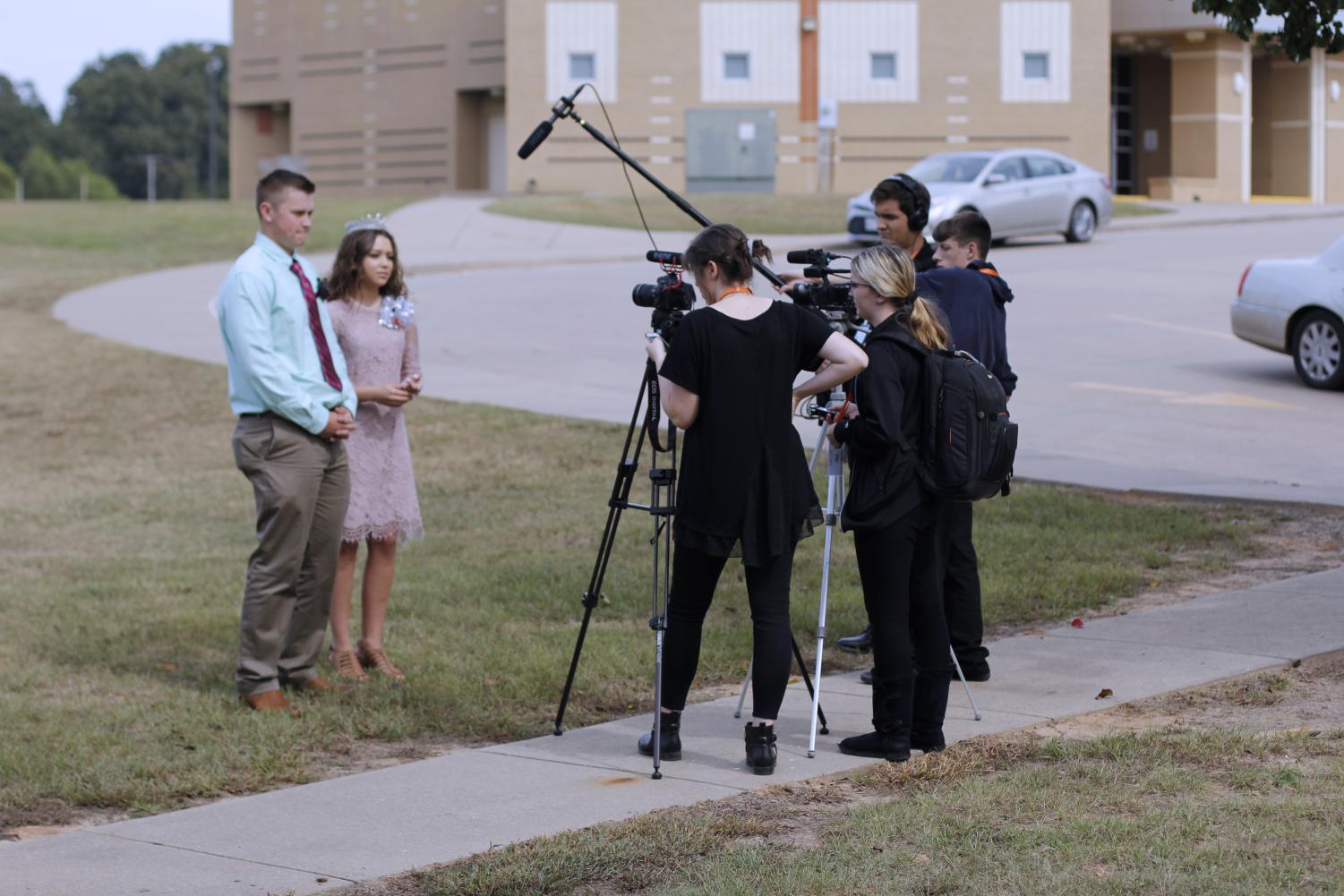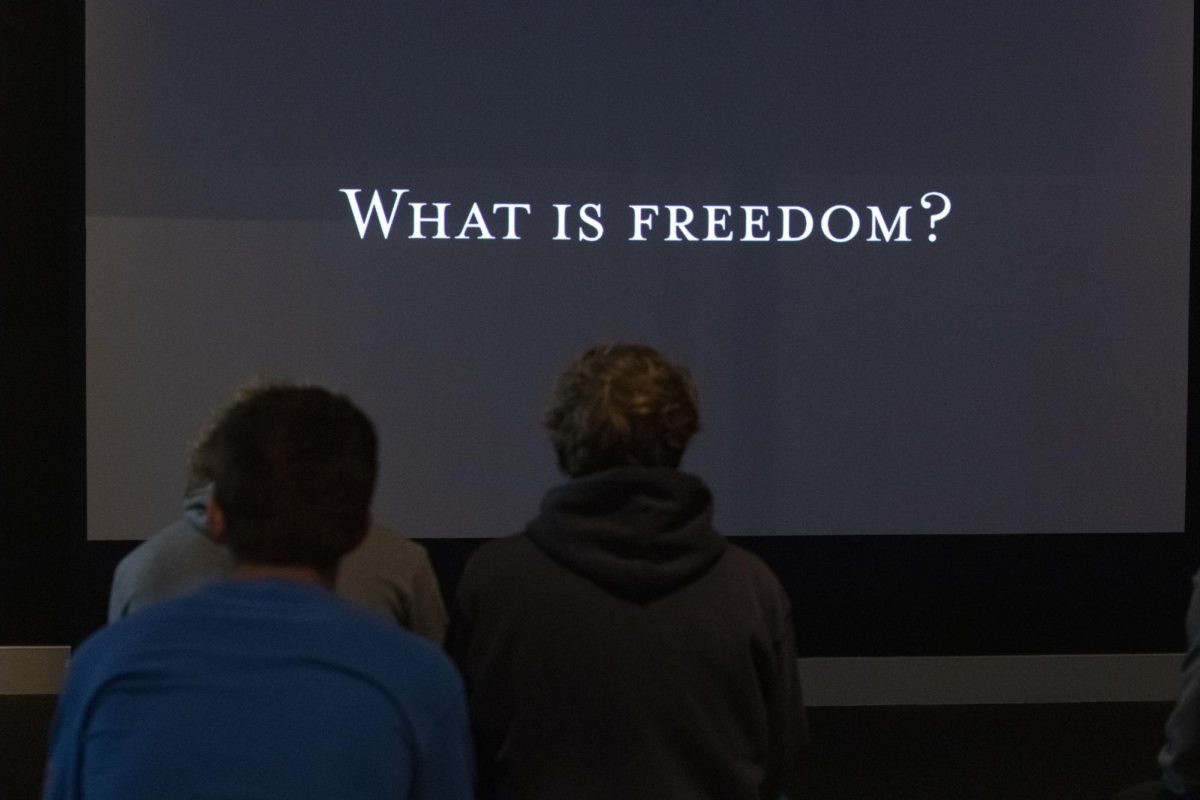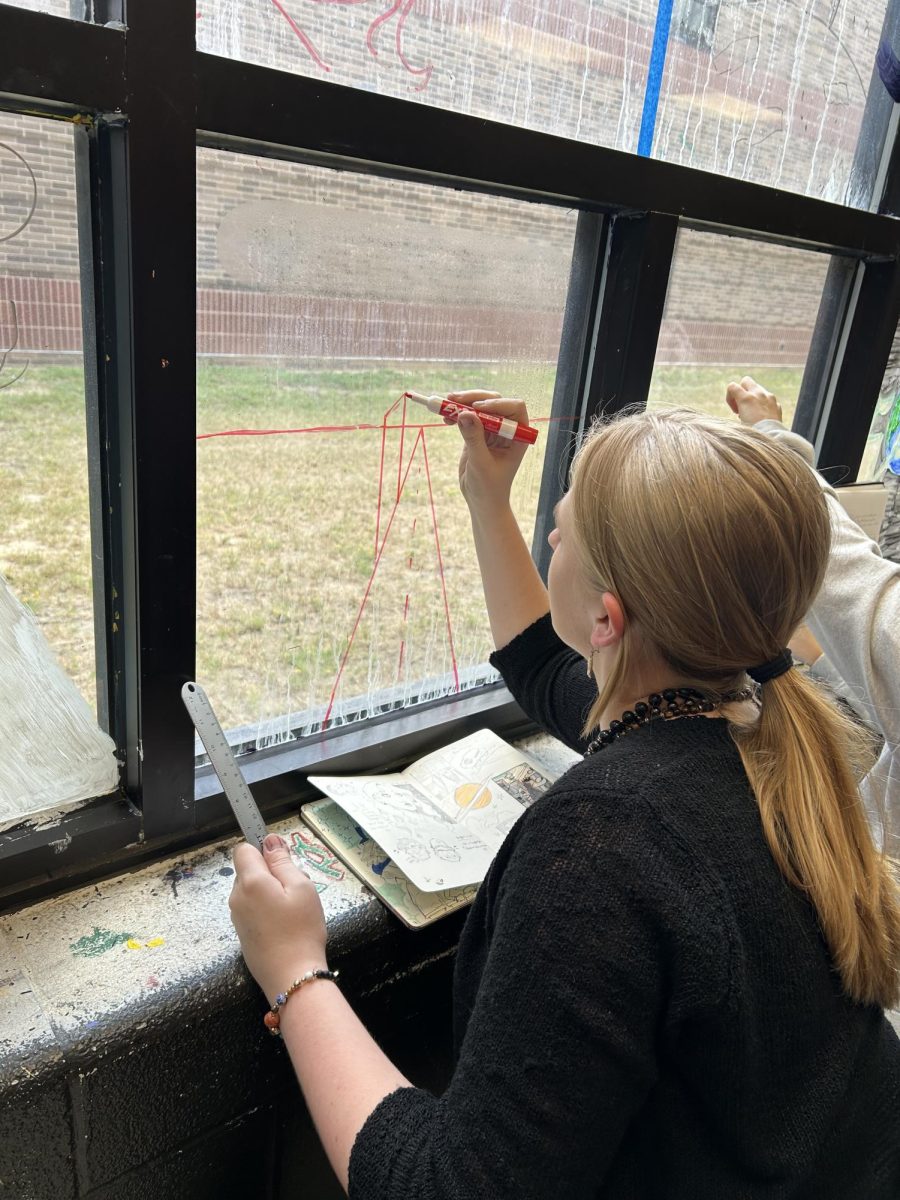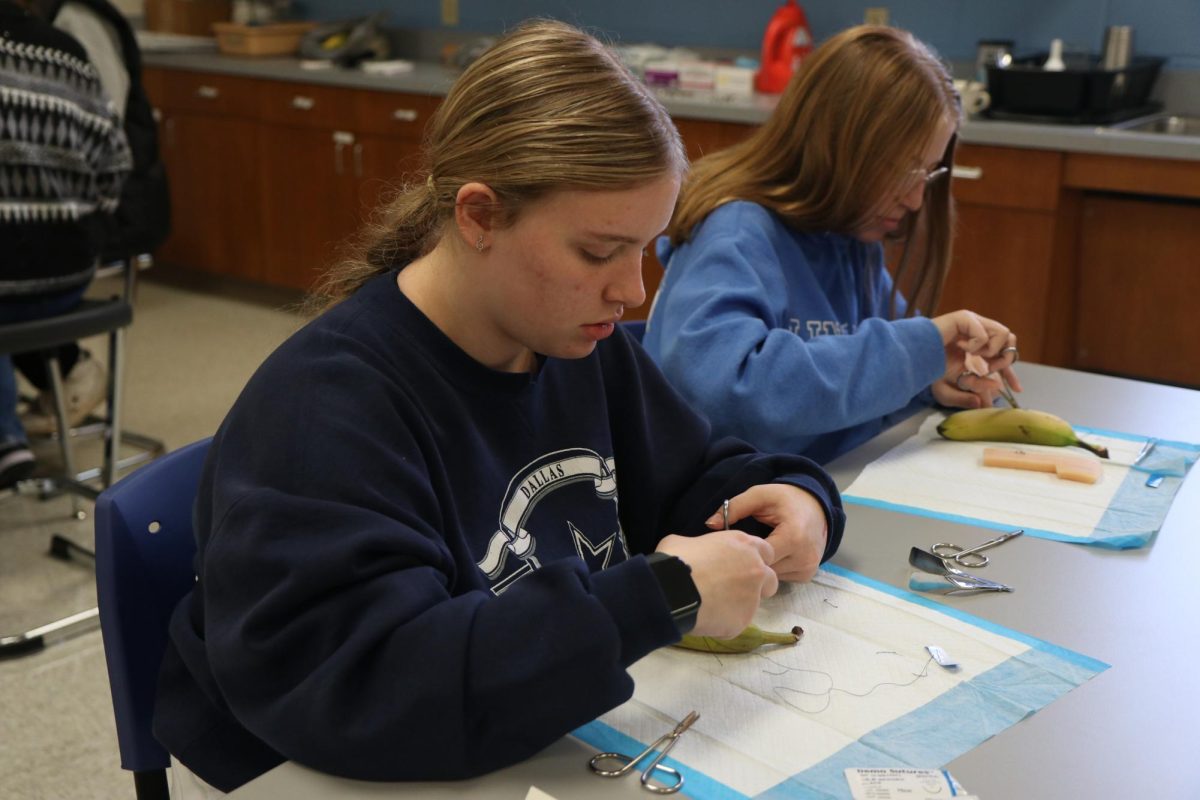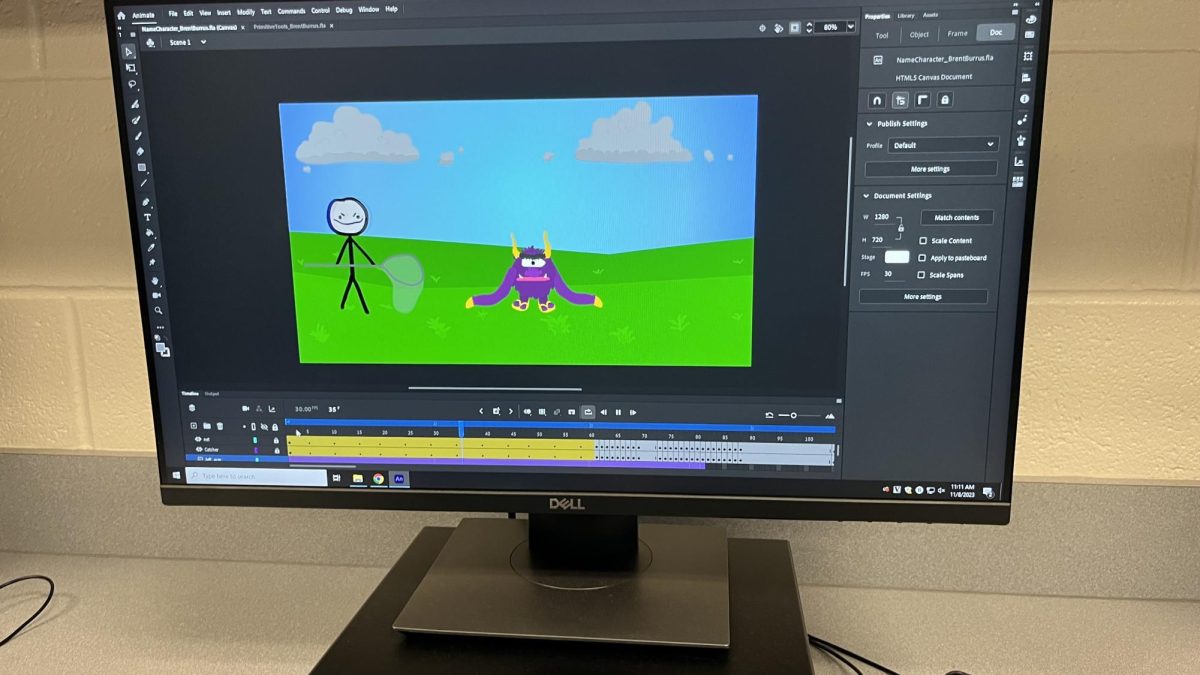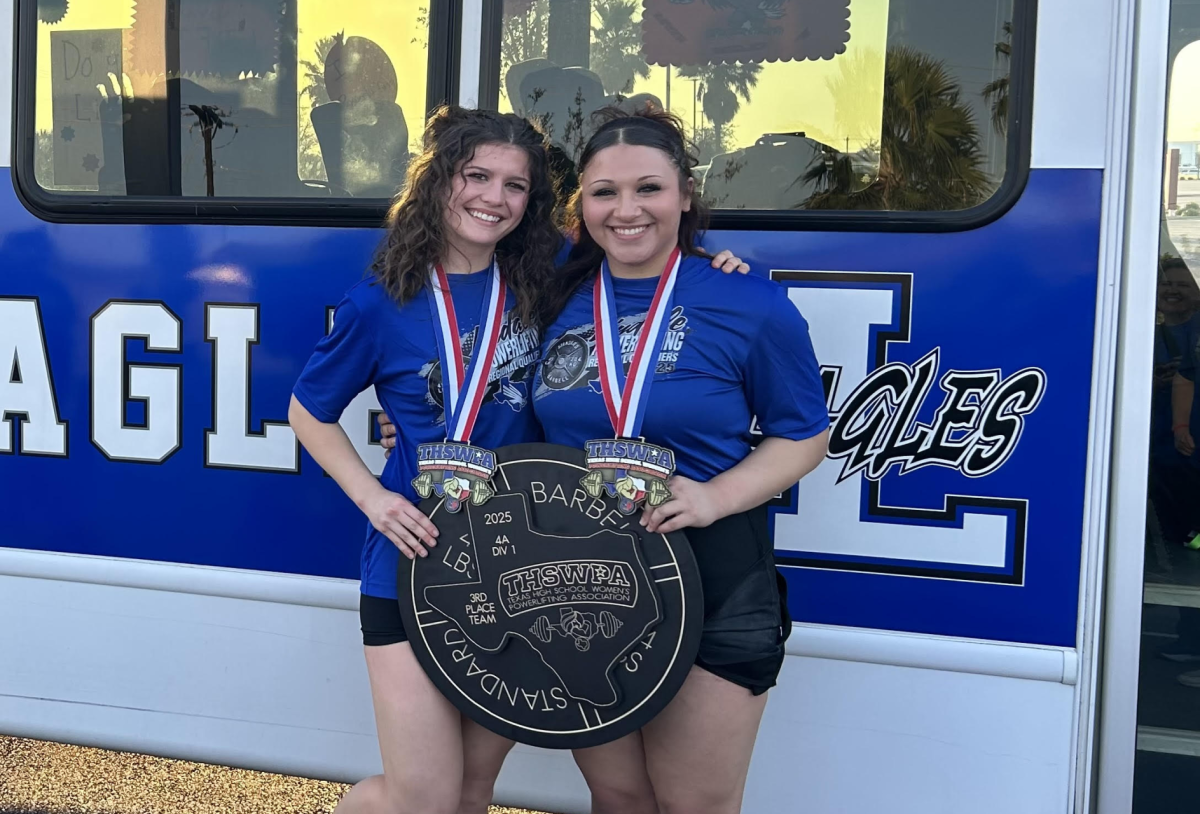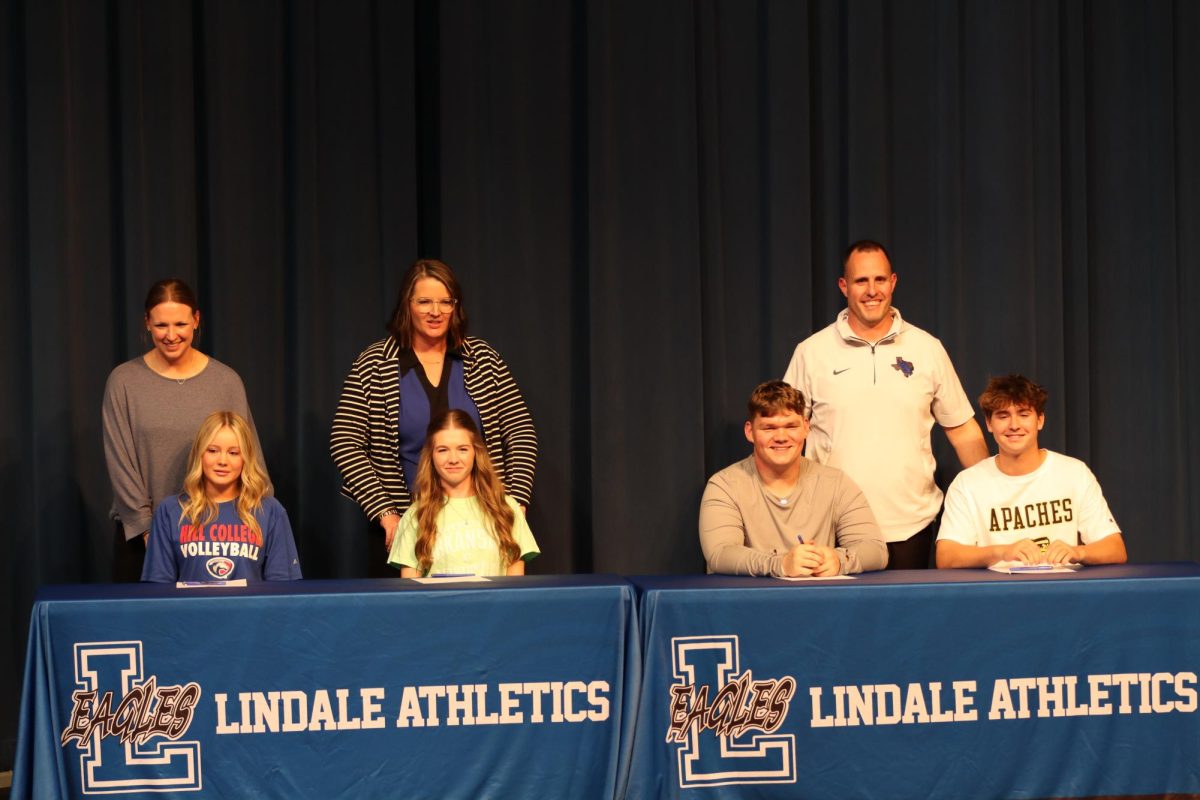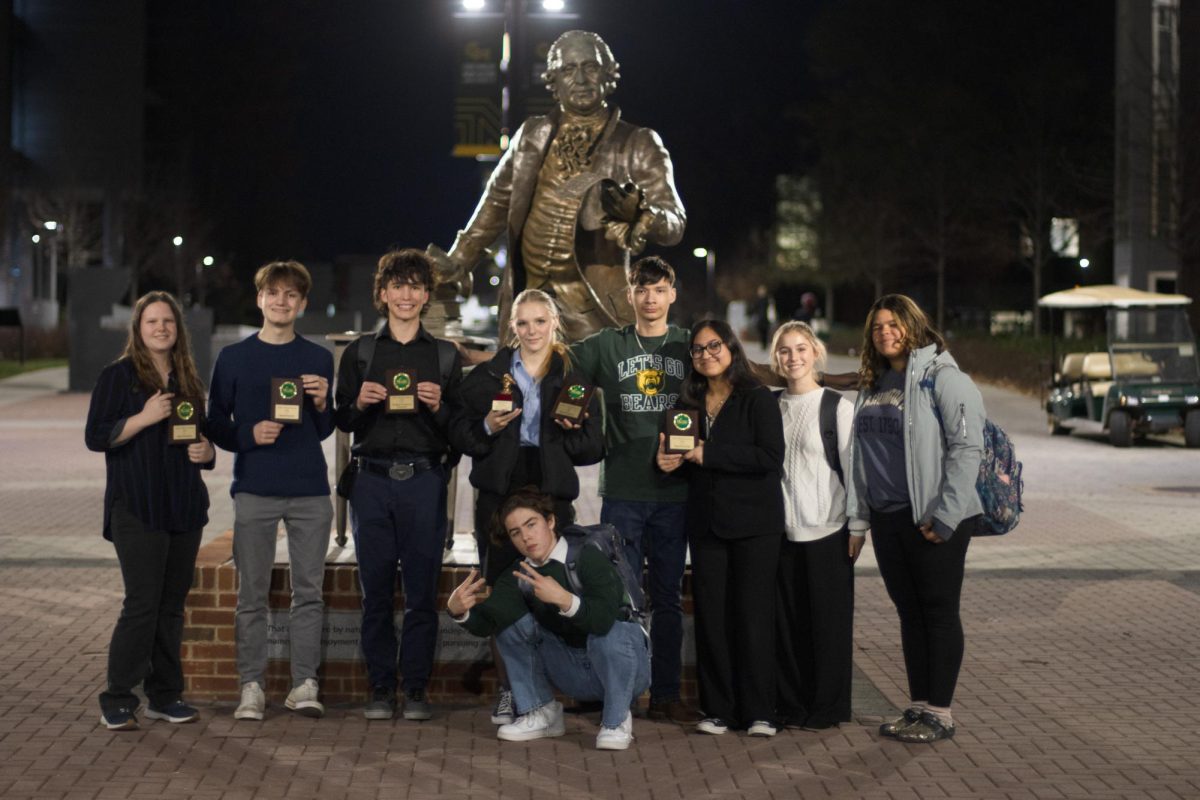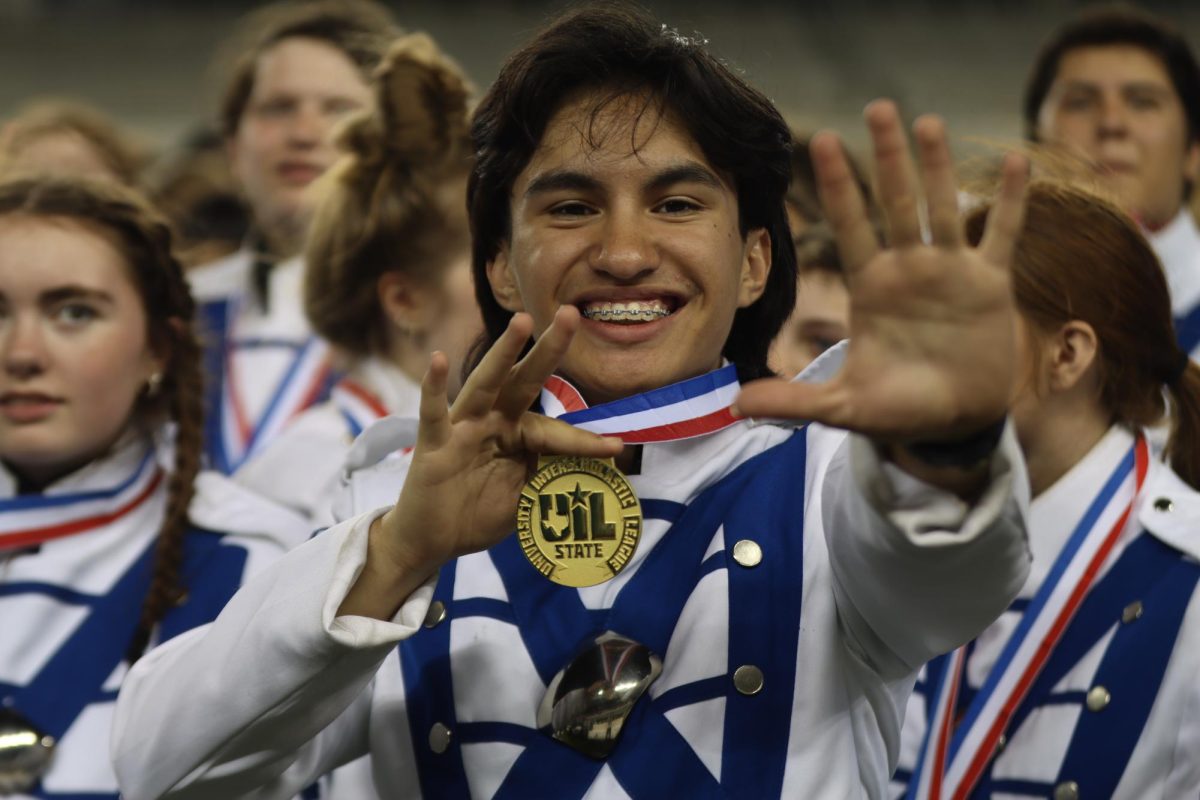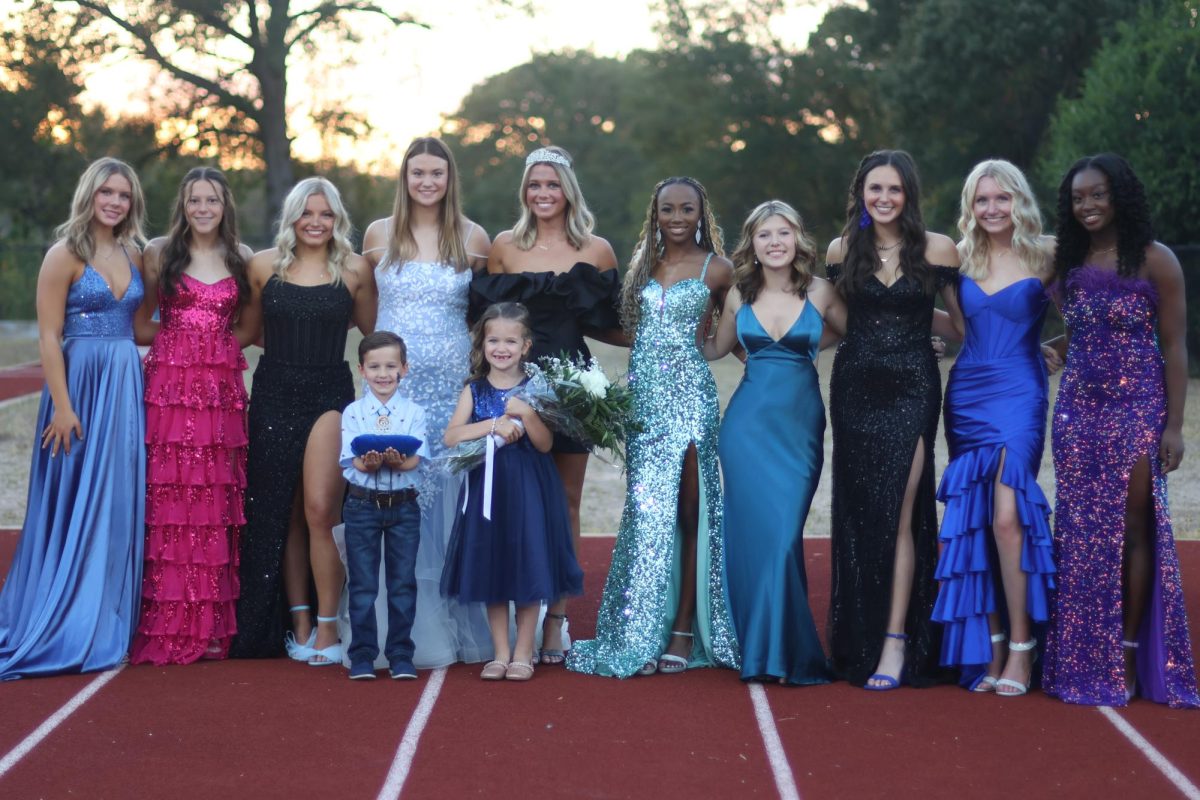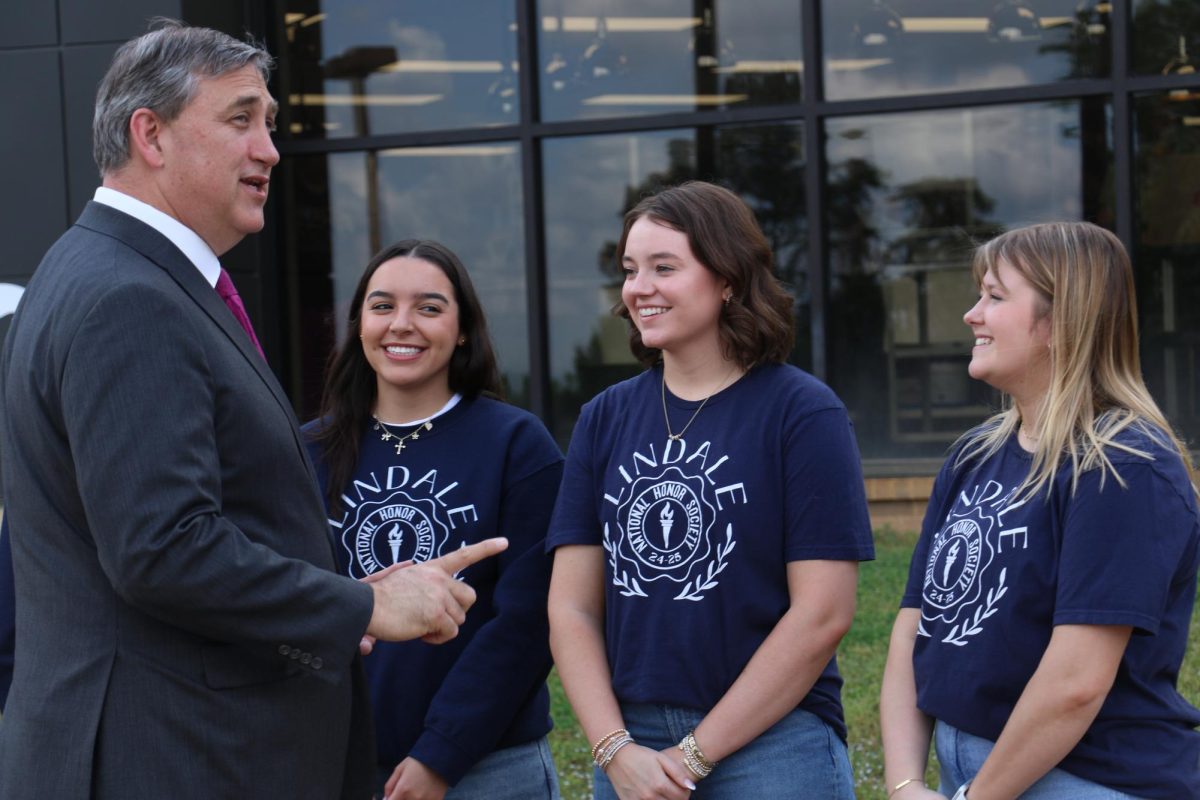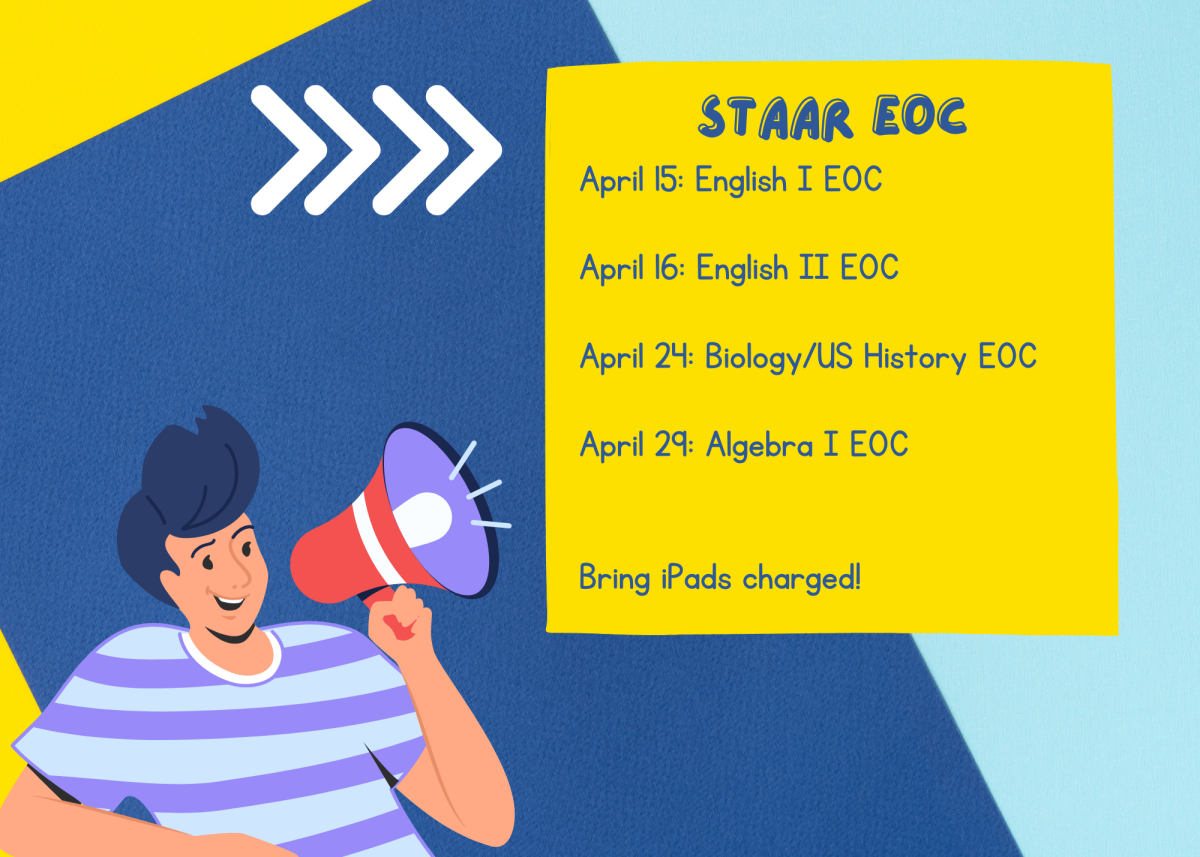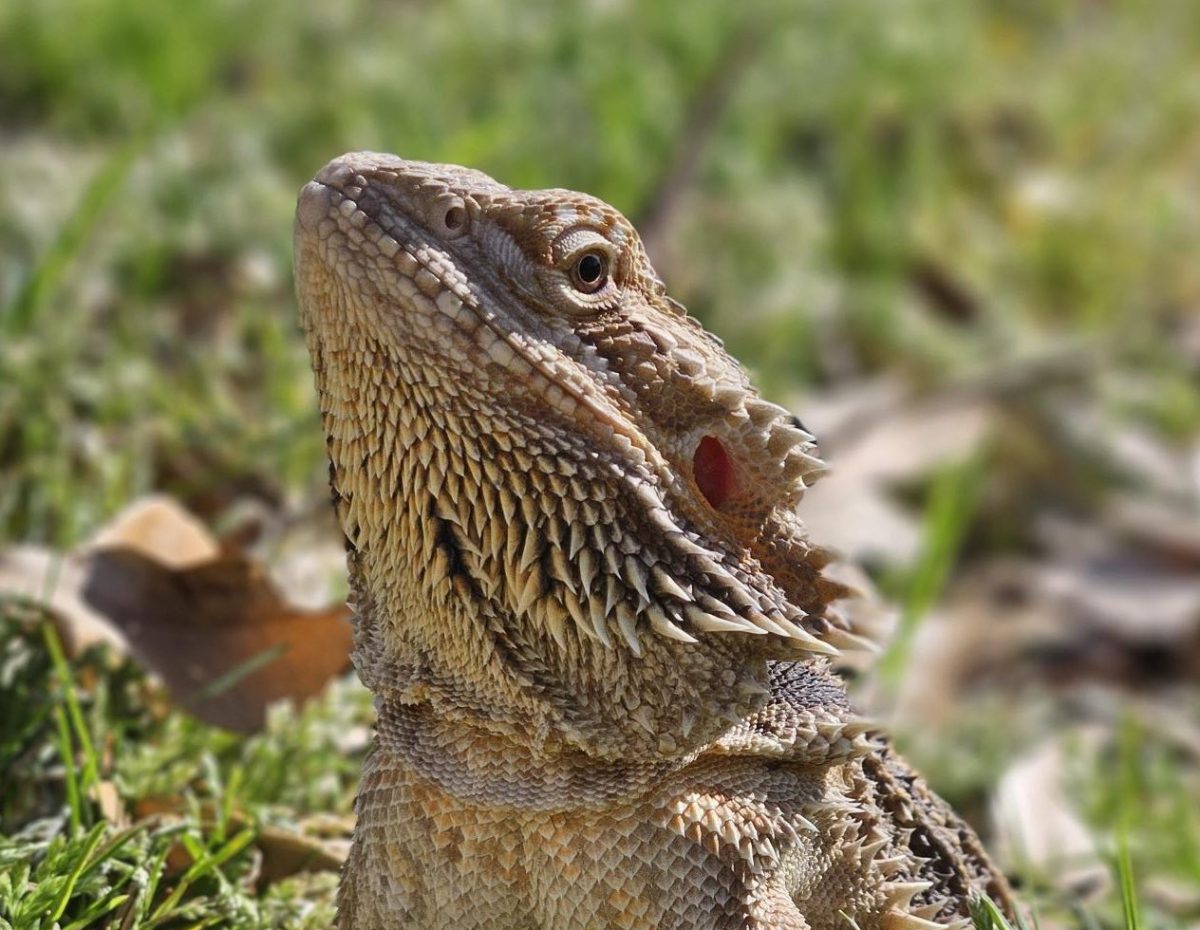They set up the cameras and test the sound. Everything is running smoothly, and they are preparing for the final shot. The director calls “action” and they begin rolling.
Students in the advanced Audio Visual Production program are making documentaries for the University Interscholastic League film competition. The contest opens in January, but students are given all year to prepare and produce the films.
“The educational goal to making the audio-visual documentaries has to do with embedding ourselves in the real world and environment of filmmaking,” audio-visual instructor Neda Morrow said. “In order to do this, they process the film from beginning to end just as they’d do in a real film studio.”
There are two different documentaries being submitted. A large scale documentary about the East Texas Yamboree and a human interest piece about Lindale community member Larry Wilson.
“We went through several months of preparation for this documentary,” director Sydney Smith said. “We made shot lists, we made questions and we did our research. We especially figured out what the [Yamboree] was and what it meant to the people of Gilmer.”
The students filmed for the Yamboree documentary in Gilmer, Texas while the festival was taking place at the end of October. They attended the majority of the events that took place for the Yamboree in order to be as inclusive as possible with their film.
“There is a lot happening when you film on location,” Smith said. “It is chaotic, and there are many people running around. There are so many things you have to cover. It’s a lot of preplanning that you have to put in to work. You have to know what you’re doing, and you have to have an idea to go along with.”
The students are now beginning the editing and post-production process for the Yamboree film. Alongside that, they are preparing and planning the filming process for the second documentary about Wilson.
“Right now, we are kind of brainstorming what we exactly want for the documentary,” director Sarah Huseth said. “We are also having to communicate with Larry Wilson to schedule times to interview and [about] other shots that we are wanting for this documentary. We have looked at other videos that could kind of inspire what path we would be going towards.”
Once both films have been shot and edited, the students will submit a seven minute version to the UIL film competition. The film will be judged in several rounds in hopes of advancing to and winning at the state level.
“UIL is a program that has a lot of academic qualities to it, and one of the things they have done is created a UIL film division,” Morrow said. “The film division allows students to create films from scratch, write them, produce them and [experience] all of the elements of filmmaking.”
This is the second year for the new audio-visual program that started in 2016 when Morrow became the instructor. This is the first year the class has had an advanced group (second year members of the program) working together to create multiple films to be submitted to UIL.
“What I hope the students learn from this is how to operate with each other in a film environment and in a businesslike manner,” Morrow said. “I am hoping that the students learn how to rely on each other and how to use each other‘s strengths without it becoming an issue. I am also hoping they learn how to advance their technology skills.”


